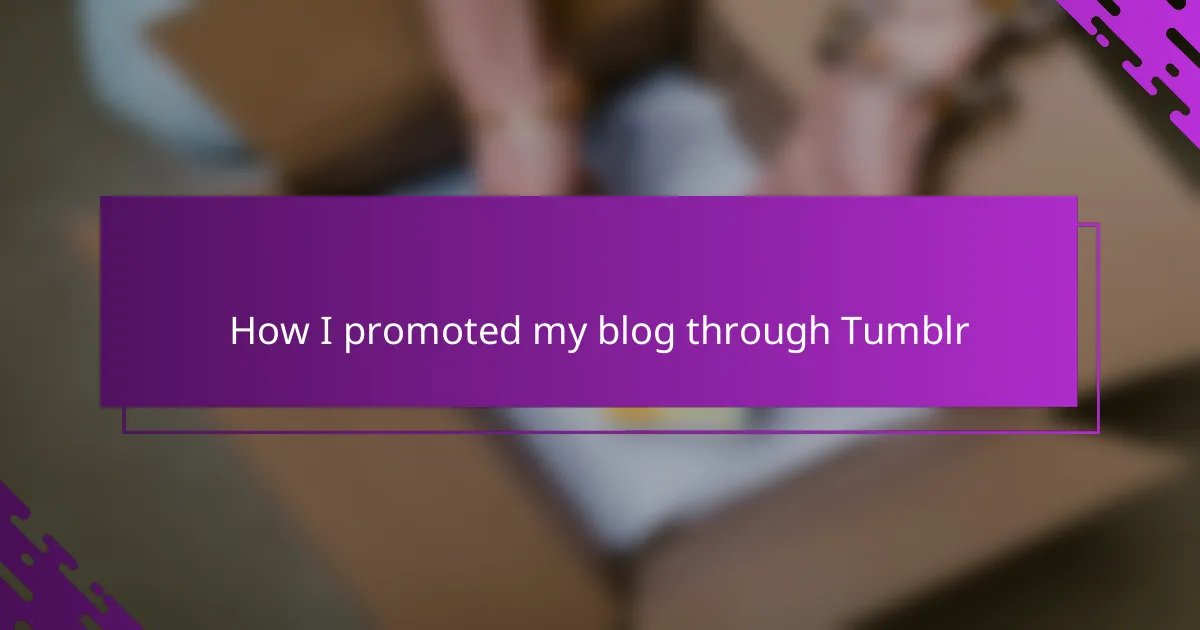Key takeaways
- Personal blogging is an authentic expression of thoughts and experiences, creating a genuine connection with readers.
- Tumblr serves as a vibrant platform that blends visual storytelling with community engagement, making content easily shareable and interactive.
- Effective content on Tumblr involves mixing various media, staying authentic, and tapping into niche communities for deeper connections.
- Success on Tumblr is measured by engagement quality, not just follower count, and adapting strategies based on feedback is crucial for growth.

What is personal blogging
Personal blogging, to me, is like having a private journal that the world can peek into. It goes beyond just sharing updates—it’s about expressing thoughts, experiences, and emotions in a way that resonates with others. Have you ever felt the urge to tell a story that only you could tell? That’s exactly what personal blogging captures.
I’ve found that what makes personal blogging special is its authenticity. Unlike polished articles or marketing content, these blogs reflect raw, honest moments. When I started my own blog, I didn’t worry about perfection; I focused on being real—and that connection is what attracted readers.
Is personal blogging just about writing? Not really. It’s about creating a space where your voice matters and your journey unfolds with every post. That’s the emotional pulse behind every personal blog I’ve followed and tried to build myself.
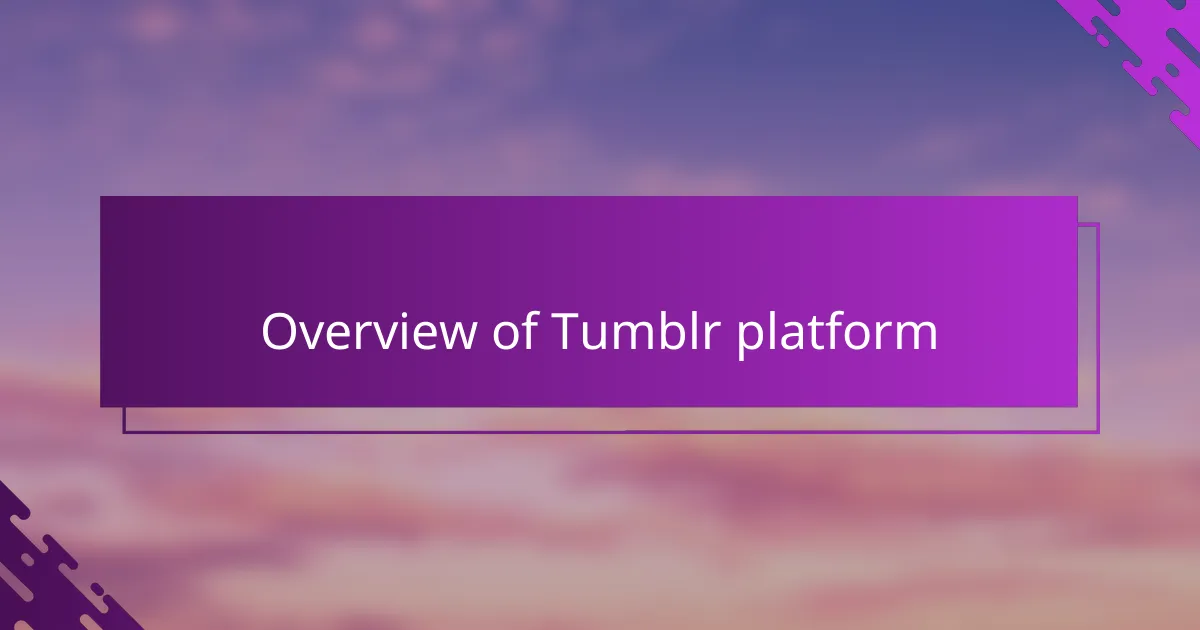
Overview of Tumblr platform
Tumblr, in my experience, feels like a digital scrapbook mixed with a social network. It’s a place where short posts, images, GIFs, and quotes come together to create a vibrant, visually appealing feed. Have you ever scrolled through a site and felt instantly inspired? That’s what Tumblr delivers.
One thing I appreciate about Tumblr is how it balances creativity with community. The platform encourages not only sharing your own content but also reblogging others’ posts, which creates this dynamic conversation across different blogs. It reminded me of passing notes in class, but much more colorful and far-reaching.
What stands out most to me is Tumblr’s user base—it’s young, diverse, and passionate about niche interests. Whether you’re into art, fashion, or storytelling, there’s an audience ready to engage. That sense of belonging made promoting my blog feel less like shouting into the void and more like a genuine exchange.
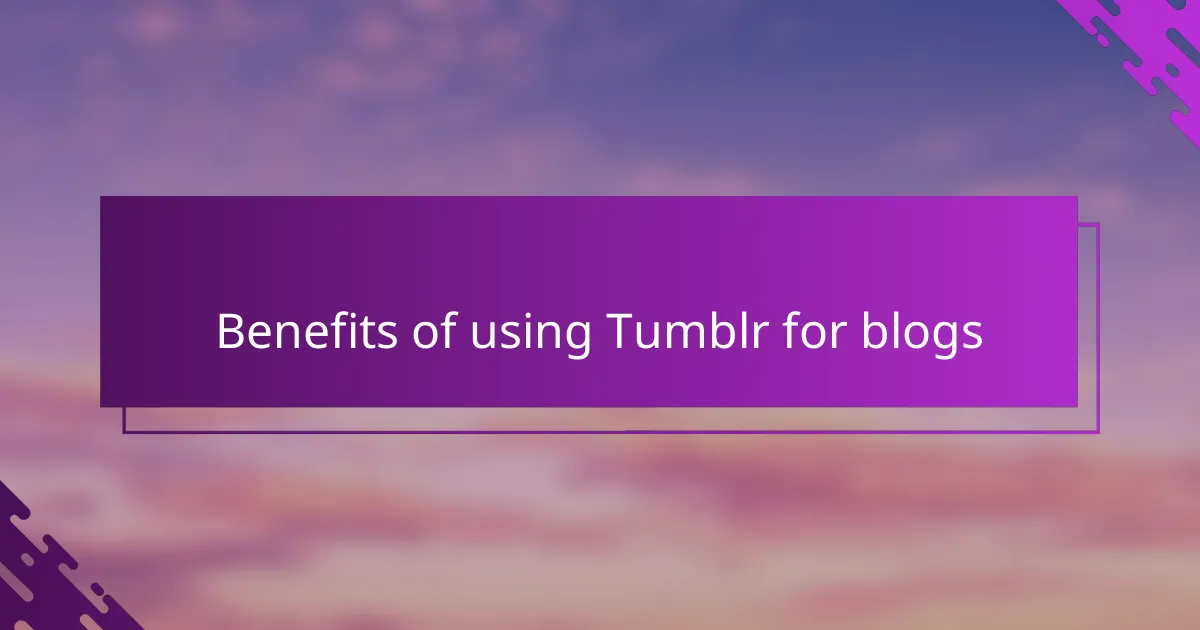
Benefits of using Tumblr for blogs
Using Tumblr for my blog opened up a world of visual storytelling that felt both effortless and fun. I loved how easy it was to mix text with images, GIFs, and quotes—it made every post feel alive and unique. Have you ever noticed how a simple, eye-catching image can grab your attention faster than words alone? Tumblr gets that instinct, and it really helped my posts stand out.
Another benefit I found was the built-in community vibe. Unlike other platforms where followers feel distant, Tumblr encouraged interaction through reblogs and comments. I remember the thrill of seeing my content reshared by someone with a totally different circle—it felt like my blog was growing organically, not forced. This kind of engagement made promoting my blog feel genuinely rewarding.
Finally, the platform’s niche diversity is something I couldn’t ignore. I discovered groups and tags aligned perfectly with my blog’s themes, so I didn’t have to compete with unrelated content. Have you ever felt lost posting in a huge crowd, hoping someone notices? Tumblr’s smaller, passionate communities made it easier for me to connect with readers who truly cared about what I had to say.
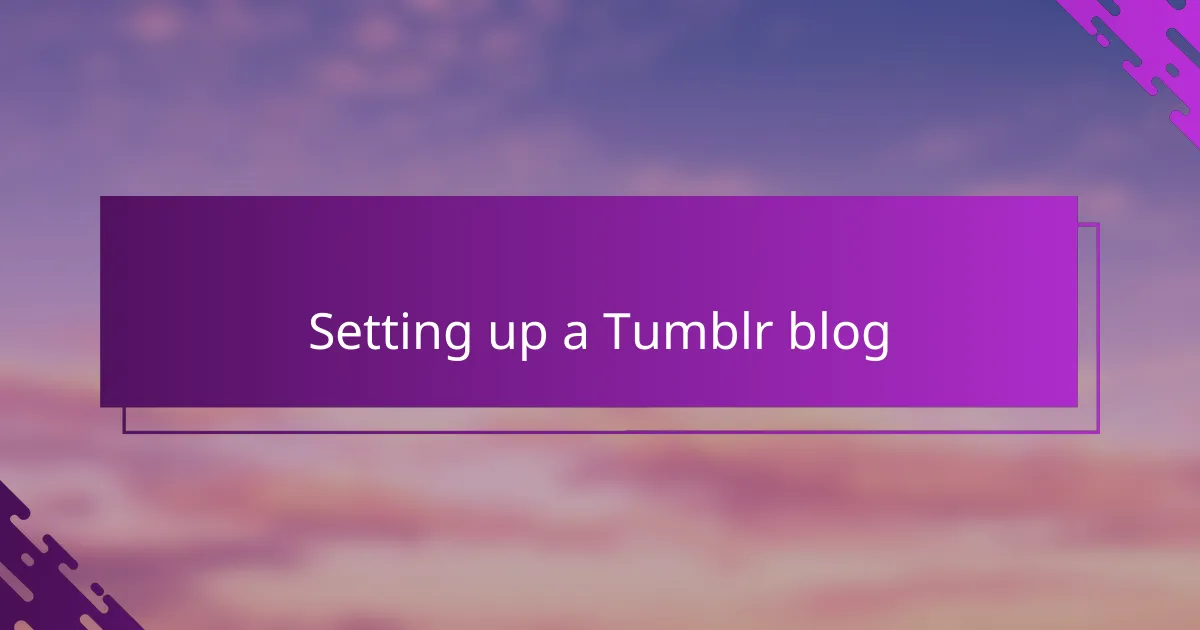
Setting up a Tumblr blog
Setting up my Tumblr blog started with choosing a username that felt like “me” but was also easy to remember. Have you ever struggled to find a name that fits just right? I found it trickier than I expected, but taking that step made the whole process feel more personal and authentic.
Next, I dove into customizing the blog’s look. Tumblr offers a variety of themes, and picking one that matched my style meant my posts wouldn’t just be words—they’d have a vibe. I loved how tweaking colors and layouts gave my blog a heartbeat all its own.
Creating your first post is where it truly starts to click. I still remember the excitement of hitting “Publish” for the first time—it felt like opening a door to a new conversation. Tumblr’s simple post editor made it easy to mix text with images, so I could share stories in my favorite way.
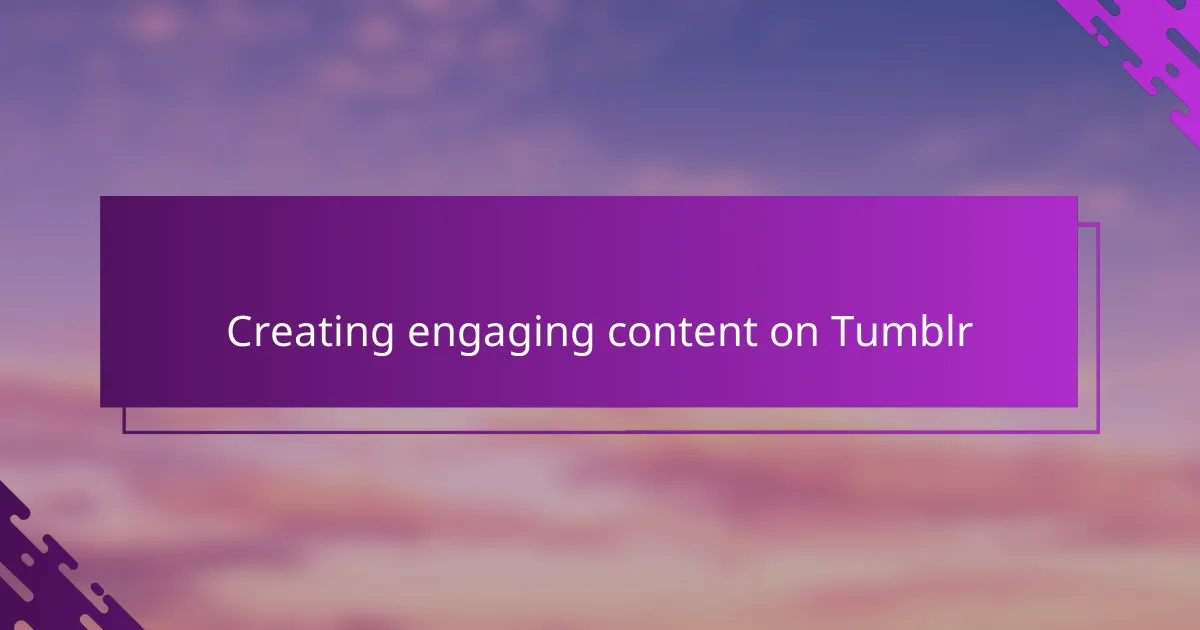
Creating engaging content on Tumblr
Crafting content that truly clicks on Tumblr means embracing the platform’s love for variety. I quickly learned that mixing my thoughts with images or GIFs didn’t just decorate my posts—it made them more inviting. Have you ever paused on a post because the visuals caught your eye? That’s the kind of engagement I aimed for.
I also found that staying authentic was key. Tumblr users seem to crave stories that feel real—not polished sales pitches. When I shared my honest experiences, even the small daily moments, the responses I received were surprisingly warm. It made me realize that vulnerability can be a powerful magnet.
But how do you keep your audience coming back? For me, it was about tapping into niche communities and using relevant tags. I remember how posting within these circles sparked genuine conversations and built a loyal following. It’s like finding your tribe—once you do, your content doesn’t just float, it resonates.
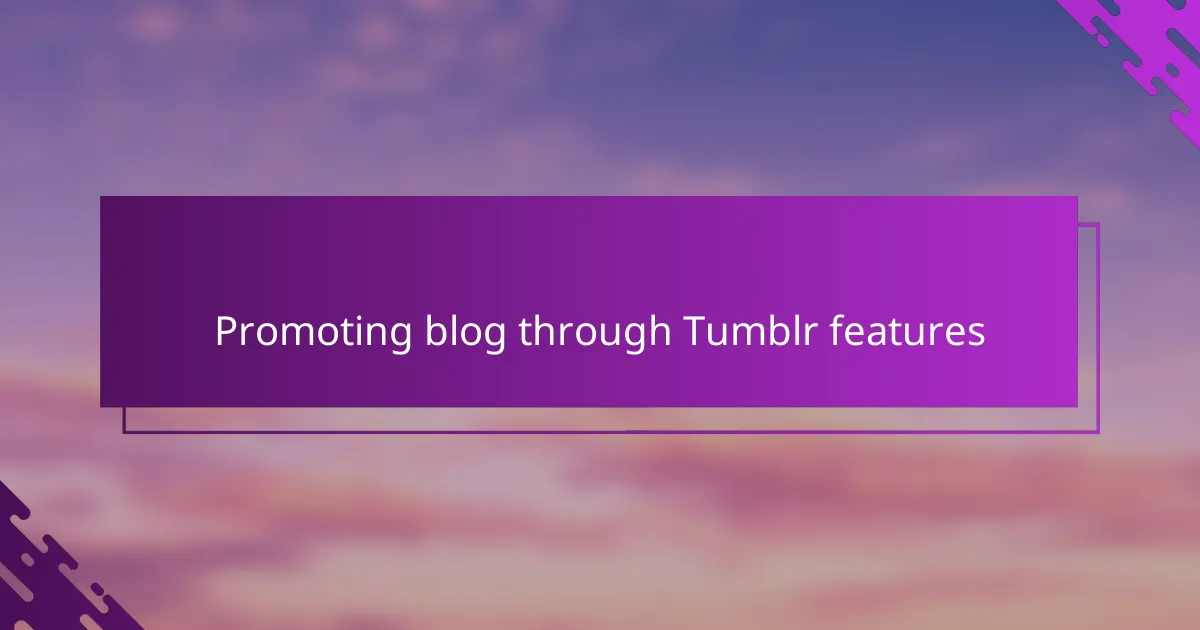
Promoting blog through Tumblr features
Tumblr’s unique features made promoting my blog feel more like sharing a story with friends than broadcasting to strangers. The reblog function, for instance, was a game-changer—each time someone reblogged my post, it introduced my writing to entirely new audiences, creating a ripple effect I hadn’t anticipated. Have you ever experienced that moment when a simple click multiplies your reach instantly? That’s exactly how Tumblr helped my blog gain momentum.
Using Tumblr’s tagging system was another feature I leaned on heavily. By adding relevant and specific tags, my posts surfaced in searches and feeds where people were already interested in similar topics. I found it incredibly empowering to connect with readers who were genuinely curious about my content, not just random visitors. It felt like dropping a message in a bottle and having it found by someone who truly wanted to read it.
Then there’s the community interaction features—likes, comments, and especially the Ask box. The Ask feature gave readers a low-pressure way to reach out and start conversations, which deepened engagement beyond just views. I’ll never forget my first unexpected question from a follower; it turned a one-sided post into a personal dialogue, making my blog feel alive and connected. Have you ever wished for that kind of direct conversation with your audience? Tumblr made it possible for me.
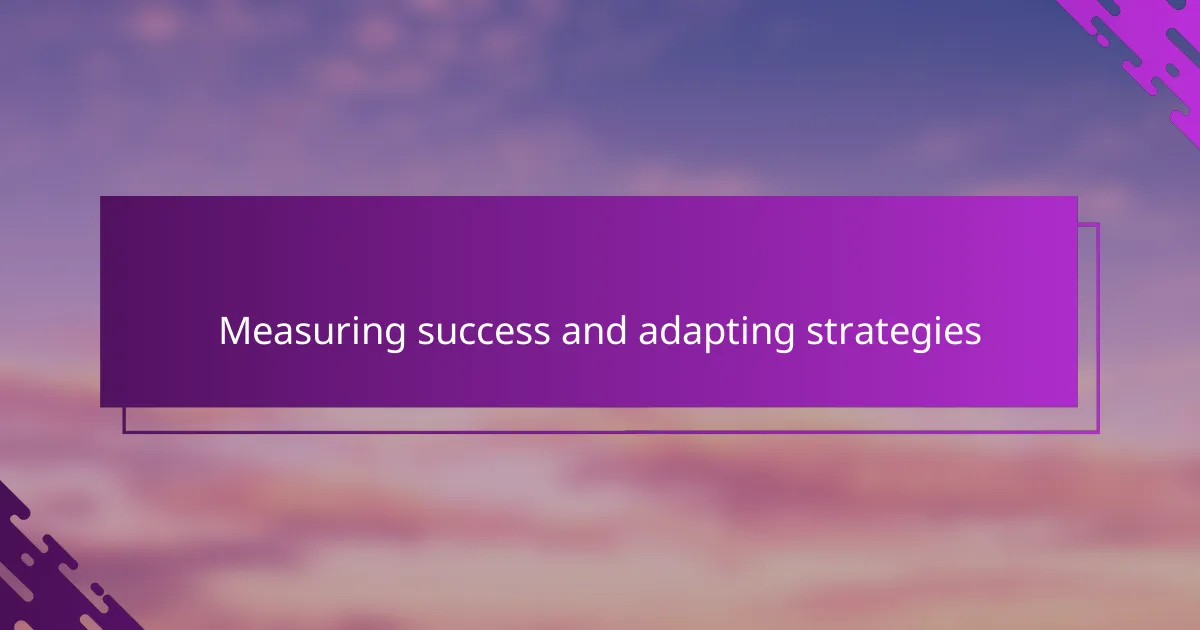
Measuring success and adapting strategies
Measuring success on Tumblr wasn’t as simple as counting likes or followers for me. I realized early on that engagement quality mattered more than sheer numbers—did people reblog, comment, or even message me through the Ask box? Those interactions felt like little indicators that my content was reaching someone meaningful, not just getting lost in the feed.
When I didn’t see the kind of response I hoped for, I took it as a cue to rethink my approach. For example, I experimented more with tags and posting times, wondering: Was I sharing at the right moment? Was my tagging specific enough? Tweaking these details helped me connect with the right audience, which was liberating because it meant success wasn’t static—it evolved with my efforts.
Reflecting on my Tumblr journey, I learned that adapting strategies based on feedback isn’t a sign of failure but a natural part of growth. It made me appreciate the platform’s fluidity and reminded me how personal blogging thrives on listening as much as on sharing. Have you ever tried changing your approach midstream and ended up surprised by the results? That’s exactly the kind of flexibility Tumblr encouraged me to embrace.
